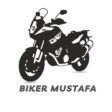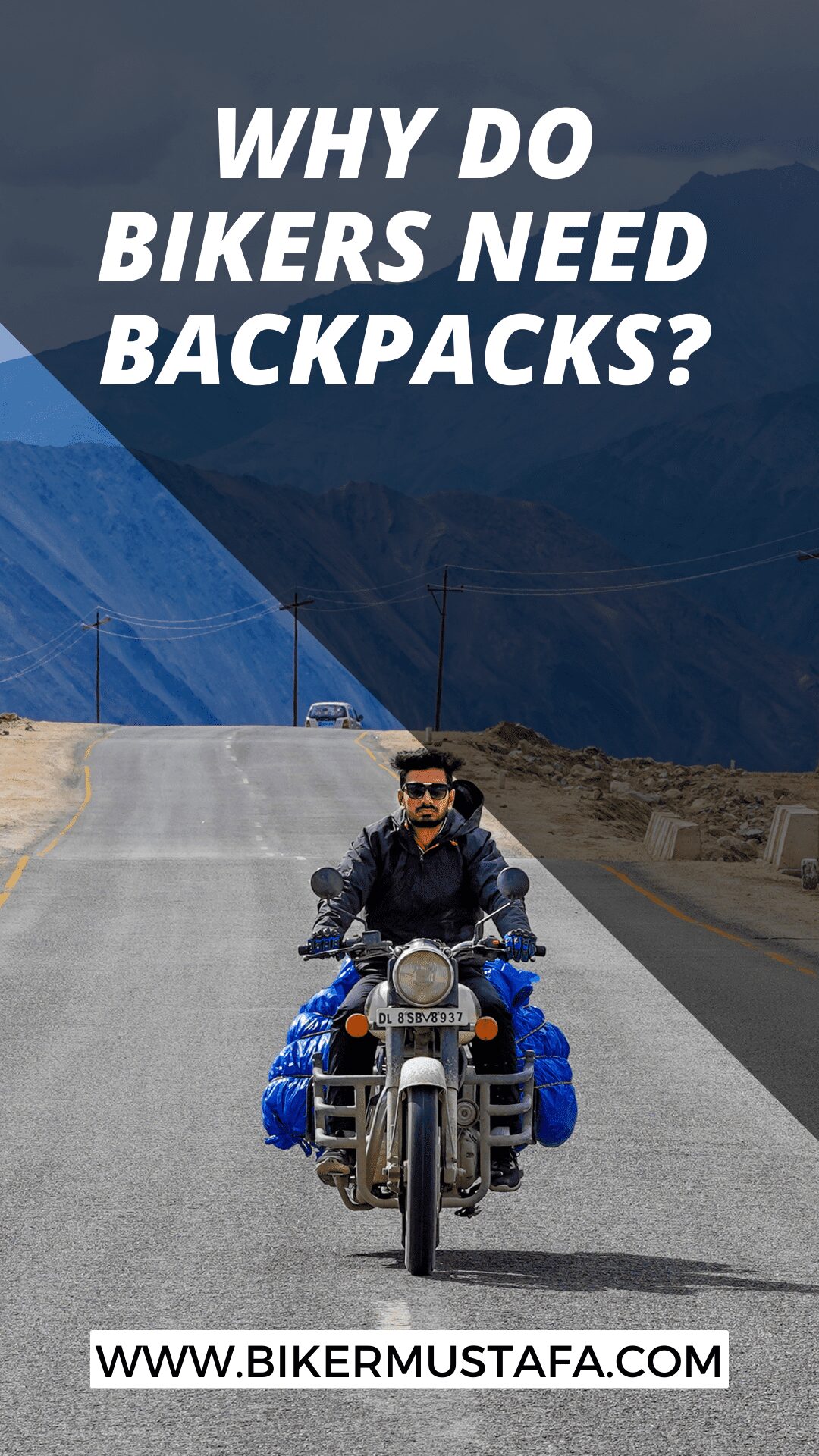Why Do Bikers Need Backpacks?
Most people know that carrying your “stuff,” whatever it may be, is simple with a backpack. If you ride a motorcycle to work or are a student, getting rid of your backpack is easy. Unless it is a motorcycle backpack, never ride a motorcycle while wearing a backpack. Spinal injuries are more likely to occur when using a typical backpack. A heavy pack may affect a rider’s balance during a ride or a fall.
Let’s examine some of the risks associated with backpack use while driving and some tips for doing so safely.
Backpacks are useful.
Most people own a simple backpack, and if you use one frequently, it will probably be prepared for usage most of the time. It’s elementary to grab and go because of this. It is a must if you are a student, and you will wear it if you commute on a motorcycle. I don’t think it’s reasonable to demand that all bikers forgo backpack use because some claim it may be hazardous. I use one when I ride my bike, and it’s never given me any trouble.
For the best possible security of your belongings while riding, a motorcycle backpack contains shoulder straps, waist straps, and an additionally protected laptop sleeve. The best motorcycle backpacks offer detachable waist straps for comfort and cushioned shoulder straps for improved grip. One of the best motorcycle backpacks for experienced riders is the Alpinestars City Hunter, which features a sternum strap and an additional rear compartment. The ideal motorcycle bag will include padded waist and shoulder straps. The most a rider might hope for is a motorbike backpack with a magnetic roll top clasp, outside pockets, a waist belt, child support, compression straps, and a laptop sleeve. When you’re not riding, you can carry your items on adjustable motorcycle backpack straps and use them as a multipurpose bag. Therefore, let’s consider how to make backpacking safer.
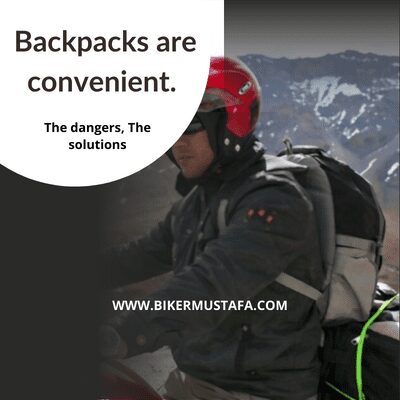
The risks and solutions
We must become aware of the risks associated with driving while carrying a backpack before we make any changes to our behaviour.
Straps dangling
Danger:
Straps Most backpacks include movable shoulder straps, while some could also have additional straps that can hang loosely. Even though the excess length of the strap is unlikely to become caught on the wheels or chain while riding, it can still be inconvenient. However, a strap can hang up or become entangled in something during a crash.
Solution:
To wrap and fasten extra straps that flap in the wind:
- Use a small Velcro strap similar to what you would use for wires.
- Select a backpack with integrated strap holders or a designated spot to store extra straps.
- When carrying other items like skateboards, tents, or camping gear, stay away from backpacks with numerous straps.
An additional burden on the shoulder straps
Danger:
Increased strain on the back and shoulders. Even a moderately weighted backpack will affect how your shoulders feel. You generally won’t notice anything if your vacation is brief—less than an hour. However, the stress on your shoulders will affect you if you have a long commute to work or drive for a considerable amount of time. This makes for a terrible ride and causes increased weariness.
Solution:
Here, resting and building up your shoulders will be beneficial. To reduce tension while riding with a bag,
- Shorten the trip.
- If you know you have a long vacation or regular long commutes, think about alternate packing options.
- Select a bag with a chest clasp or waist support straps.
Additionally, a waist strap will ease some of the strain on your shoulders. Because most of the pack’s weight falls on the hips rather than the shoulders, backpackers can carry 30 pounds for hours. This can be an excellent alternative because some more miniature packs include hip support. If so, make sure the backpack covers your hip bones. It won’t work if you don’t.

When opening, the zipper may vibrate.
Danger:
Zippers can be opened, so leave everything behind while traveling. Sincerely, it is possible. Have you ever seen someone carrying a partially open package because the contents are too stressful to close? It may also occur while driving.
Solution:
This is a simple one. The zippers should not be closed halfway through the pocket. Instead, a zippered pocket should only have one side with both zippers pulls. This is something you should always do, not just when you’re carrying a backpack. Your possessions are significantly safer with it.

What transpires to a backpack in a collision?
Danger:
So what happens if there is a collision? Many individuals believe that the backpack will protect your back from traffic or bumps. Let’s examine the logistics of it, though. Your back will most likely have a bundle that extends for a foot or more. Your body would curve backward and around the package if you were to land on your back. Additionally, your head will be elevated by a further foot. Consider the strain this can place on your neck and spine.
Option 2 for landing: As you descend, your backpack strap attaches to the handlebar or rearview mirror. An injury to the neck or shoulder could result from this.
Landing choice 3. You’ll land on your ribs and crack as your luggage slides sideways! This can be a problem whether you’re carrying tools or small, solid objects. Even a laptop can do significant harm if it is placed on it correctly.
Solution:
Wear a motorbike bag made explicitly for riders and a back protector. Back protection must be worn by YOU or be a part of your riding jacket; it cannot be in the bag. Because? It isn’t beneficial if the protector is within the bag and moves or comes off after a crash.
Purchase a bag made just for motorcycles. The outside of many of these packaging is made to be rough. The durability of these strong shells can be improved. Although a drag-free pack won’t completely eradicate it, anything you put in it will maintain the drag uniformly distributed across your back. Select a set with chest or waist straps. When using the backpack, ensure each strap is firmly fastened. Instead of something hanging or dangling from your body, you want it to be an extension of your body.

Poorly distributed weight in backpacks
Danger:
Due to uneven weight distribution or shifting objects in your backpack, you lose balance when turning.
Solution:
Instead of just stuffing your belongings in a backpack, there is a strategy. If you must transport tools or small items, put them in a tool roll or compact bag to prevent them from rolling around. Use the pen pockets or the little zipped compartments.
The center of the bag and as close to your back as you can hold any heavy things. Place lighter objects as far away from the back as you can, such as clothing, jackets, or shoes. Consider donning a light jacket to fill in the space in your bag if you don’t have enough items to fill it, which raises the risk of shifting objects.
What to take into account when selecting a motorbike bag?
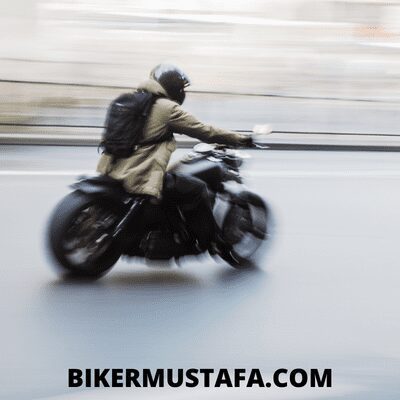
I might take the time to write an entire blog post about this subject. Here are a few factors to consider as you choose the best backpack for you, albeit for the time being.
The bag wouldn’t allow any sharp objects to pass through it.
Please view our selection of Hard Shell Motorcycle Backpacks
• It is constructed from durable materials like Cordura cloth.
• A back protector can be inserted.
• Your motorbike bag needs to be waterproof.
• Stay away from roll-top closures; they are tedious to use.
• Storing your helmet off the bike may be done quickly and easily with the help of a helmet-carrying component in a motorcycle bag.
Sport bike
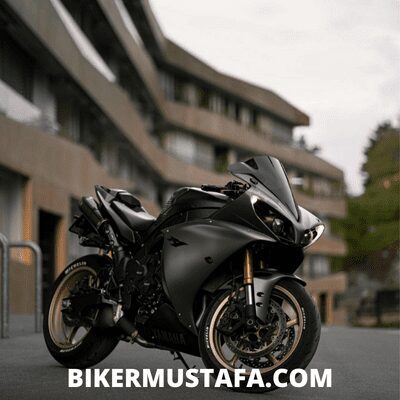
You need something that sits nicely in that forward riding position if you ride a sport bike. Think about a bag that won’t drag. One that comfortably and beautifully fits on your back. Most of the weight distribution will be in your lower back and shoulders, so keep the weight of your backpack to a minimum. This forward position will also support a portion of the bag’s weight.
Normal Motorcycle
The bag’s weight will be more of a burden on your shoulders if you ride a regular bike and are upright. To evenly distribute the weight across your hips and chest, think about using a pack with hip and chest straps. Once more, pick a bag that is both comfortable and well-fitting for you.
Touring Bike

Ensure the hydration bladder is near your back if you are riding an ADV or intend to utilize a pack with a hydration system because it will be the heaviest component. Choosing a backpack with numerous zippered pockets is acceptable, but make sure your belongings fit neatly inside each one and stay there while you’re riding. A few substitutes for motorcycle backpacks
Tank bag
The gas tank is situated at the front of the motorbike, above the tank, where tank bags are typically placed. They often offer more room than a backpack and frequently have many compartments. The ability to reach tank bags while driving is one of their benefits. On the other hand, when you get to your destination, a backpack will be more convenient to carry than a tank bag.
Trunk bag
Your everyday necessities fit well in the back baggage on the passenger seat. Saddle bags are more portable and storage-friendly than backpacks or tank bags because they can be taken off and set down on the ground. However, a back bag is typically much smaller than a backpack.
Saddlebag
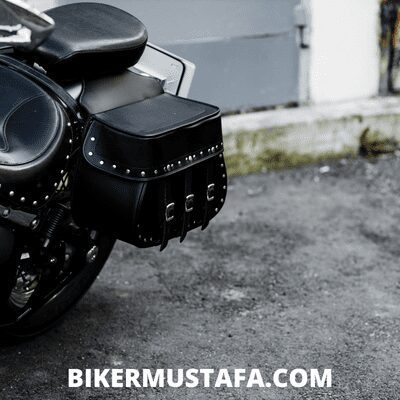
The ability to access your belongings while riding is one benefit of panniers, although they often have fewer pockets than a backpack, typically with one or two wide openings. This main compartment almost always exceeds the size of your luggage.
Top box
Another option for luggage you cannot access while driving is the top trunk typically placed farther back. Once you get there, removing the top boxes is challenging.
To sum it up
Thus, as is evident, there are numerous factors to consider when using a motorbike backpack. Additionally, there are countless possibilities for bag transportation on motorcycles. Yes, a trillion billion. However, I hope this post has given you some food for thought regarding the safety measures you may take when traveling with a backpack and, possibly, some ideas to help reduce the danger. Buy motorcycle-specific backpacks, whatever you do.
Bring a backpack along while you ride. If you ride a motorcycle frequently, you’ll need a practical means to transport stuff. One is wearing a backpack.
If you ride a motorcycle frequently, you’ll need a practical means to transport stuff. One of the well-liked solutions available to you is carrying a backpack. Before using one, please read this quick overview of a backpack’s advantages and disadvantages. It will assist you in reaping the benefits of backpack transportation while avoiding its drawbacks. Convenient, transportable storage You can carry little stuff on your back while riding a motorcycle without having any physical impact. Pack a backpack with your lunch and workout gear.
It is helpful for small purchases as well.
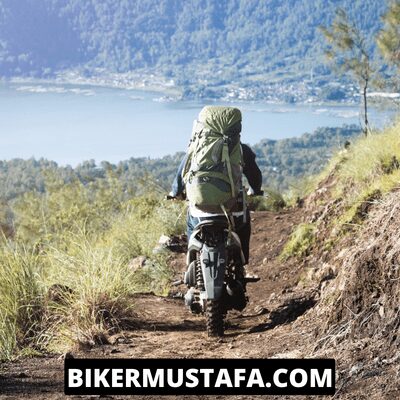
Additional defense for your back in case of a fall
Biking backpacks are padded for comfort. In the case of an accident, they offer additional padding and back support for bikers. Experience has shown that wearing a backpack reduces the possibility of suffering a back injury in a fall. Compared to most racks, which can bike riskier for the rider, it is safer.
Some manufacturers of backpacks have created unique backpacks for bikes to cater to the unique needs of motorcycle riders. Some bike backpacks have extra-hard backing to lessen the drag users of regular backpacks encounter. An excellent strap system holds the backpack in place when riding and includes a separate section for mp3 player cords.
Negative aspects of wearing a backpack
Not appropriate for bulky or metallic goods. Cans of food and other heavy items shouldn’t be transported in backpacks. They increase the possibility of injury to the rider in the event of an accident when they are utilized for such objects. Heavy things can also exert a great deal of strain on the rider’s back.
Accidents might result from improper use.
A mishap could occur if the backpack is not securely fastened to the rider. The user could lose control of the bike if a strap is too loose and catches on something nearby that is moving or stationary—attaching the backpack directly to the bike or using a saddle when the backpack is too big or heavy to hold the stuff you need to carry.
Driving on roadways may result in drag.
Some bikers have noticed that when riding on a road, their bags cause drag. The fast wind surrounding the rider and the high speed are typically to blame for this. However, you might not experience this resistance if you use your motorcycle to travel on lesser roads in the backcountry. A backpack riding a motorcycle might make it easier to carry little objects without feeling their weight on your back. If you’re riding your bike on the road, you might want to use a backpack made just for riders. When using your bag, secure it properly and take the required safety procedures to prevent mishaps and harm.
People Also Ask:
Is riding with a backpack safe?
According to Amanda, “the typical backpack is not made for usage by motorcyclists.” If a biker falls, the backpack could seize and twist its spine, or its contents could harm them. Many packs are also not ergonomic; thus, when worn for extended periods, they might lead to unbalance or discomfort.
Can you wear a backpack while biking?
The ideal bags for biking are backpacks, messenger bags, and shoulder bags because they stay on your body while you’re moving. Other items like shoulder bags or handbags don’t function well when you ride to work because they tend to get in the way.
Are motorcycle backpacks worth it?
I think motorcycle bags are a scam. They will be more expensive and lack the necessary characteristics to be worthwhile. Any ordinary bag will do.
